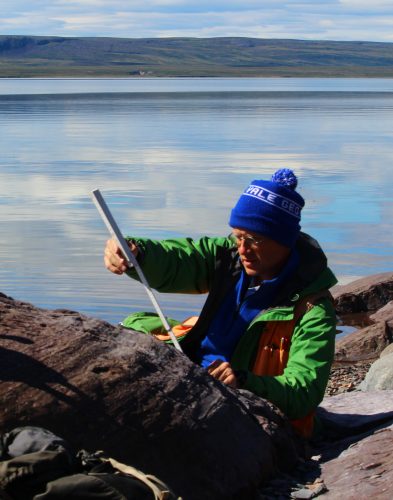Pangea is Earth’s most well-known and recent supercontinent. It began to break apart only around two hundred million years ago, but the history of Earth’s continental movement starts many more hundreds of millions of years ago. David Evans, director of the Yale Paleomagnetic Laboratory, professor of geology and geophysics, and head of Berkeley College, studies this ancient movement. Recent developments in his research have uncovered a new hypothesis.
Unlike Pangea, whose geological record of breakup is still intact in the ocean floor, the older supercontinents that Evans studies require a different arsenal of methods, as the oceanic records of their motion have since descended back into Earth’s interior. His lab uses paleomagnetism, in which the magnetic signatures of certain minerals in ancient rock are analyzed to draw new insights. By associating the orientations of their magnetic fields with their ages, Evans can hypothesize the path of their movement.
Studying continental drift is complicated by the fact that bodies of land tend to become deformed as they move. Evans compares the gradual wear and tear of continents to having multiple fender-benders on a bumper car and trying to figure out what it looked like originally. “Or, using a puzzle piece analogy, someone snipping off all the interlocking bits and somebody else sanding away a bit of the picture of each piece. Of course, many pieces also get lost and you’re trying to figure this out without a picture on a box,” Evans said.
Despite these obstacles, deducing a complete history of continental movement is important for finding patterns and predicting future supercontinents. There are three models for the assembly of new supercontinents: introversion, extroversion, and orthoversion. Introversion hypothesizes that new supercontinents form in the same location as previous ones; a supercontinent breaks up, temporarily opens up an ocean, and drifts back together in the same place, perhaps in a different orientation. The extroversion model predicts exactly the opposite, that broken supercontinents rejoin on the opposite side of the Earth. The last theory of orthoversion is an intermediate theory which Evans’s lab coined several years ago.
Orthoversion states that continents are instead confined to no more than ninety degrees from their point of origin. This theory rests on geological evidence of a “ring of fire” surrounding the Pacific, where plates in the deep Earth come together and drop downwards like a carpet being pulled into a slit in the ground. As a result, continents, like the furniture on the carpet, collide and can continue to move neither forwards nor backwards.
More recently, Evans has turned his attention to Rodinia, a supercontinent that existed eight hundred to nine hundred million years ago. His lab is currently investigating a relatively novel hypothesis of this supercontinent’s structure, refuting the idea that California was once connected directly to Australia or South China as many other experts have suggested, and looking for other candidates. “People started out looking at the big intact pieces of the Earth’s crust—Australia is one of those big pieces…For all the pieces that have been suggested, we’ve been able to refute them through a combination of magnetic studies or comparisons of geology,” Evans said. Researchers realized that relying on these “big pieces” might not work in places like Central Asia, where its relatively recent collision with India has broken up the land into much smaller pieces. “What we’re recognizing now is there was a big piece there, but you can’t recognize it anymore,” Evans added.
From analysis of field samples collected from the area, Evans’s data showed that part of China could not have been where people initially thought it was, on the side of Rodinia. Instead, his data directs it to a spot right in between California and Australia. “One of the things that really impressed me about the possibilities now is that we might need to look at some of these areas that have been chopped up by younger events and consider those as maybe once-larger intact blocks,” Evans said.
“The ultimate goal is to finish the entire puzzle, which is actually a series of puzzles strung together across the vast reaches of time,” Evans started. Moving forward, Evans hopes to fill in another piece of the puzzle by leading his lab to Morocco, which used to be part of the West African Craton, “When you can play an entire movie back and forth of seeing three or four supercontinents assemble and break up and reassemble again, that is when we can start to find patterns,” Evans added.

